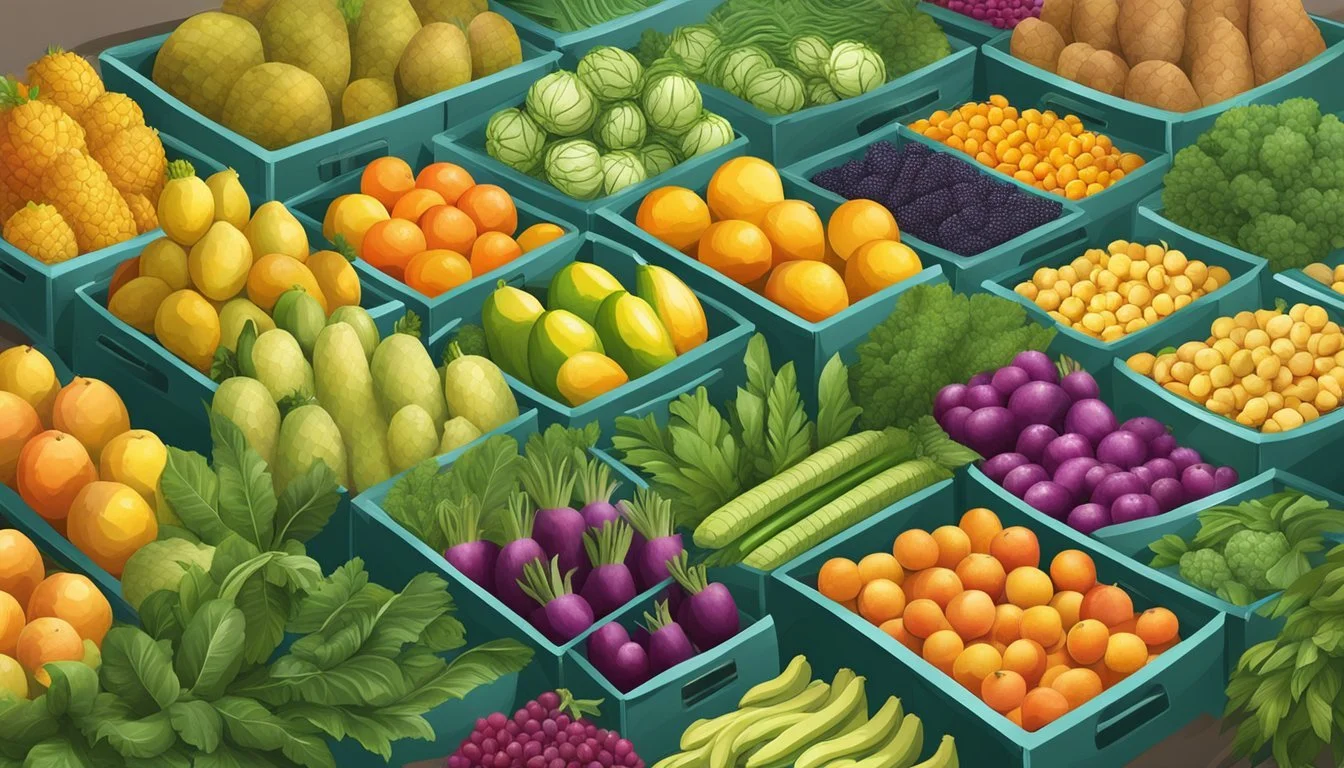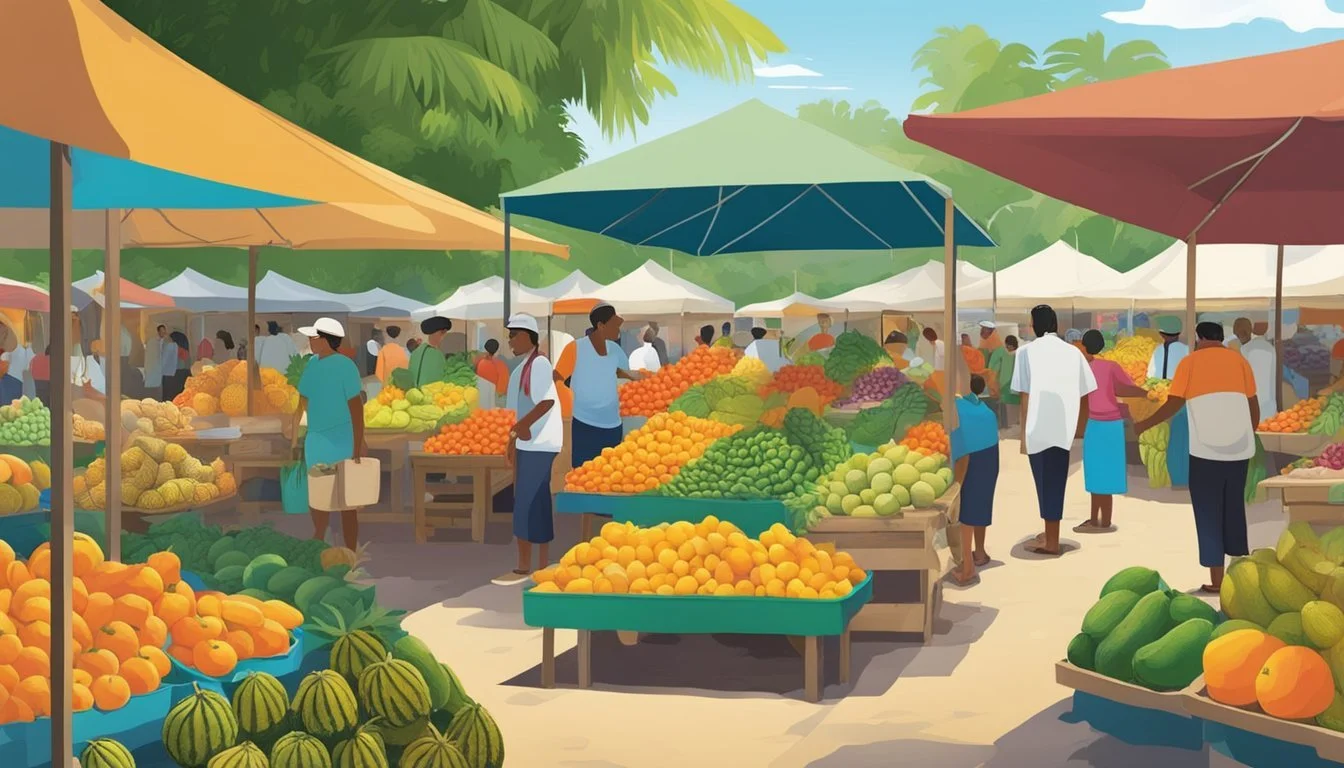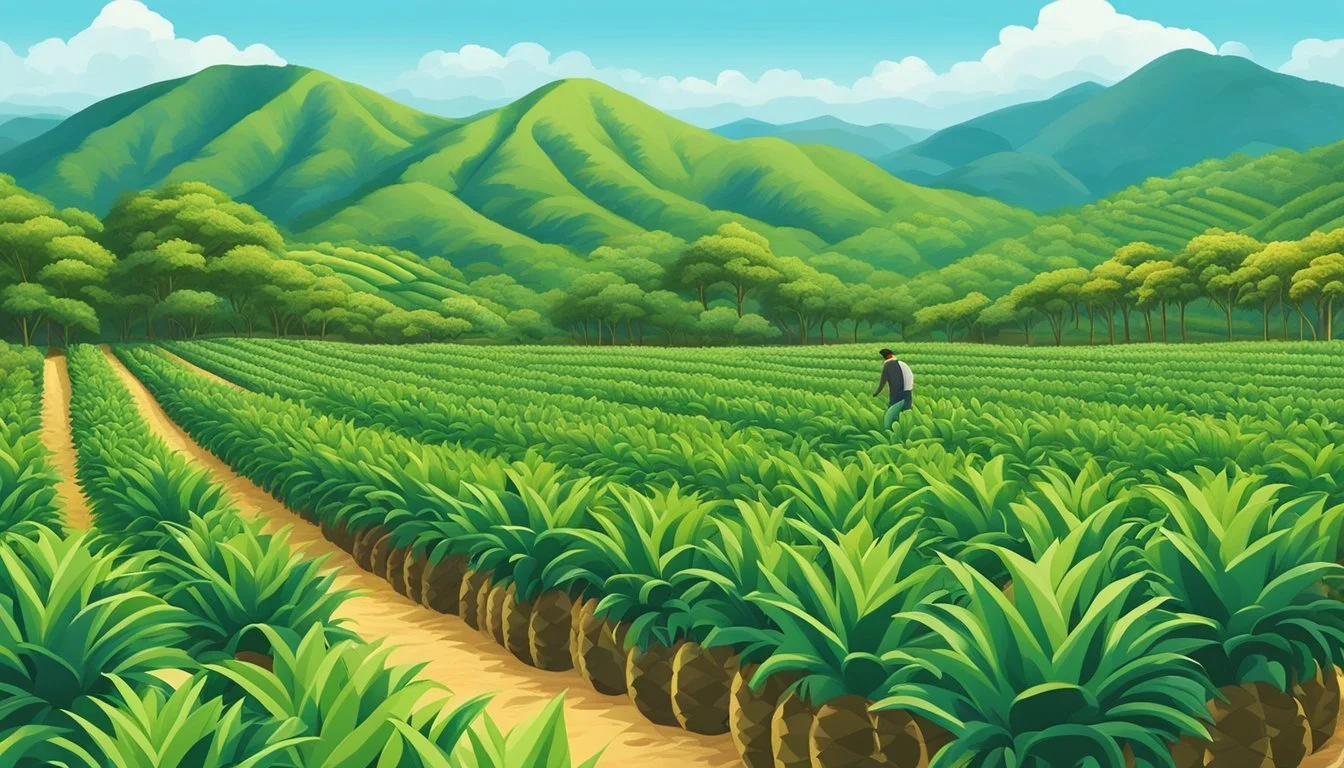Hawaii Seasonal Fruit & Vegetables in April
Your Guide to Fresh Produce
This Article is Part of our Hawaii Seasonal Fruit & Veg Calendar
In April, the Hawaiian Islands offer an abundant array of locally grown fruits and vegetables, a testament to the state's fertile volcanic soil and unique microclimates. This month captures the tail end of the peak seasons for some of the island's tropical delights while also marking the beginning of availability for others. The rich tapestry of climatic zones across the archipelago allows for a variety of fruits to thrive, offering consumers a taste of Hawaii's natural bounty.
Among the tropical fruits coming into season are the various types of Hawaiian bananas (how long do bananas last?), including the popular apple banana, which is known for its sweet and slightly tangy flavor. Avocado, a fruit highly valued for its creamy texture and versatility, can also be found. Citrus fruits, particularly oranges, are still in their prime, providing a refreshing zest that embodies the tropical essence of the archipelago.
Hawaii's agricultural offerings in April are not restricted to fruit; an assortment of vegetables is also at its peak. As the islands transition from the wetter winter months to the drier climate of late spring, the harmony between the environment and farming practices is reflected in the diverse, fresh produce available to both locals and visitors, showcasing the state's dedication to sustainable, locally sourced agriculture.
Overview of Hawaii's Seasonal Produce
In April, Hawaii offers a bountiful array of fresh produce, with many fruits and vegetables reaching their peak harvest seasons, thanks to the islands' unique climate that supports year-round growth.
Understanding Hawaii's Unique Climate
Hawaii's climate is unparalleled in its ability to support a diverse range of produce all year. The archipelago's tropical location and varying elevations create microclimates that are highly favorable for agriculture. In April, the weather is typically warm and balanced with adequate rainfall, providing excellent conditions for many crops to flourish. This period is not only pivotal for the growth of produce but also for the farmers who rely on this time to harvest and supply the freshest fruits and vegetables.
Key Harvest Seasons in Hawaii
April is seen as a peak harvest month in Hawaii for a variety of fruits and vegetables. Crucial to Hawaii's farming calendar, it presents a time when both farmers and consumers can enjoy the richness of the land's offerings. Below, find a focused list of produce that is typically at its best during this month:
Fruits in Season:
Avocado (November - February)
Banana (June-October)
Orange (September-April)
Strawberry (January - April)
Mango (March - November)
Vegetables in Season:
Lettuce (Year-round)
Tomato (Year-round)
Cucumber (Year-round)
One should note that while some of these items extend beyond April, this month still often represents the height of their flavor and availability. Farmers markets and local groceries are particularly vibrant during this time, providing consumers with access to fresh, nutrient-packed selections that both support the local economy and exemplify the premium taste that comes with peak ripeness.
Seasonal Fruits Available in April
In April, Hawaii's abundant agriculture presents a variety of ripe fruits for harvesting. Here is a selection of the state's seasonal offerings, divided into categories for easy reference.
Citrus Fruits
Orange: April marks the tail end of the orange season, so you can enjoy juicy segments packed with Vitamin C.
Lime: Although available almost year-round, limes in April are particularly refreshing, ideal for a tropical beverage or a zesty garnish.
Tropical Delights
Papaya: This succulent fruit is a staple on the islands, with its peak season spanning through April.
Banana: Sample the unique apple banana variety, differing from its standard counterparts with a richer, tangier flavor.
Guava: A quintessential tropical fruit, guava is ripe and ready for consumption in April.
Mango: While the peak mango season starts a bit later, early varieties begin to appear in April.
Lychee: Towards the end of April, lychee lovers can start to enjoy these floral, fragrant fruits.
Starfruit: Known also as carambola, starfruit provides a juicy, tart taste and a starry appearance when sliced.
Berries and Other Fruits
Strawberry Guava: Distinct from common strawberries, strawberry guava is in season, offering a delightful combination of flavors.
Passion Fruit (Lilikoi): Passion fruit is another acidic, yet sweet fruit available this time of year, often used in local desserts and dishes.
Mountain Apple: Although not as widely known, mountain apples offer a watermelon-like crunch with a hint of rose in their flavor profile.
Seasonal Vegetables to Expect in April
April in Hawaii brings a diverse array of vegetables to the forefront, with farmers harvesting a variety of fresh and flavorful produce that is at its peak. Visitors and locals alike can indulge in a breadth of vegetables that range from leafy greens to earthy root vegetables.
Leafy Greens and Herbs
Hawaii's April harvest offers a range of leafy greens, including crisp lettuce and hearty cabbage. The warm climate allows for an extended growing season of greens, making them abundant during this month. Fresh herbs such as basil, cilantro, and parsley are also bountiful, adding aromatic flavors to any dish.
Root Vegetables and Tubers
Sweet potatoes and radishes are key players among the root vegetables and tubers found in Hawaii's April selection. Sweet potatoes offer a nutritious and versatile component to meals, boasting a sweet, earthy flavor, while radishes provide a peppery crunch to salads and slaws.
Other Vegetables
April's warmth brings a variety of other vegetables to their prime. Corn and zucchini thrive in this period, alongside eggplant, tomatoes, and cucumbers. These vegetables are perfect for grilling or adding to stir-fries. Cantaloupe (how long does cantaloupe last?)and watermelons, though often categorized as fruits, are included here because of their culinary uses that align closely with vegetables.
Where to Find Fresh Produce
Finding fresh, locally grown fruits and vegetables in Hawaii during April is a straightforward affair, with multiple options available. Consumers can opt for local farmers markets for the freshest pickings or visit grocery stores and supermarkets that stock a range of local produce.
Local Farmers Markets
Farmers markets are quintessential for those seeking the freshest seasonal produce directly from the growers. They can expect to find a variety of fruits and vegetables that are in season in April, such as avocados, bananas, and leafy greens. These markets support Hawaii's agricultural community and provide a platform for consumers to support local farms. Shoppers are encouraged to bring reusable bags to carry their purchases.
Examples of Popular Farmers Markets in Hawaii:
Kapiolani Community College Farmers Market (Honolulu)
Hilo Farmers Market (Hilo)
Maui Farmers Market (Maui)
Farmers markets typically operate one or more days a week, and shoppers can find the specific days of operation by visiting the markets' official websites or social media pages.
Grocery Stores and Supermarkets
For convenience, grocery stores and supermarkets in Hawaii often stock a selection of locally grown produce, albeit sometimes at a higher price compared to farmers markets. These stores collaborate with local farms to provide consumers with a consistent supply of fruits and vegetables. Many stores highlight locally grown produce sections, making it easy for shoppers to choose local products.
Tips When Shopping for Local Produce:
Look for labels or signs that indicate "locally grown."
Check the freshness: locally grown produce is likely to be fresher due to the shorter transit time.
Ask store personnel for guidance on when they receive deliveries of local produce to ensure the freshest selections.
By frequenting local farmers markets and grocery stores that prioritize locally sourced fruits and vegetables, consumers will find ample supplies of fresh produce in April and contribute to the local economy.
Preparing and Enjoying Hawaiian Produce
Hawaiian produce offers a bounty of flavors that can be enjoyed in various culinary traditions. In April, the islands’ fresh fruits and vegetables can be transformed into both time-honored Hawaiian dishes as well as innovative culinary creations.
Traditional Hawaiian Dishes
Hawaiian cooking is rich with traditional dishes that feature the fresh produce of the islands. Luau, a classic Hawaiian feast, often incorporates leafy greens similar to spinach, which are perfect for wrapping meats and seafood before slow-cooking them to perfection. A staple at any luau is laulau, where local greens envelop pork, fish, or chicken, providing a savory, infused flavor from the earthy leaves.
Poi, made from taro root, is a traditional Hawaiian side dish with a distinctive purple hue, and enjoys its peak season around April. The preparation involves mashing the cooked taro until it achieves a sticky paste-like consistency, often enjoyed with other Hawaiian dishes.
Coconuts are also prevalent, and their milk and water are used extensively in traditional recipes. Coconut water provides a refreshing and hydrating drink, while coconut milk lends its creamy texture to a variety of sauces, desserts, and stews.
Modern Culinary Uses
In contemporary Hawaiian cuisine, chefs are finding inventive ways to place the islands' produce at the center of the plate. Fruits such as pineapples are incorporated into salsas, marinades, and desserts, providing a sweet and tangy flavor that complements many dishes. For instance, pineapple chunks might be added to a poke bowl for a burst of sweetness or grilled alongside seafood for a smoky touch.
Vegetables like the kabocha squash, which is readily available up through March, can still be enjoyed in early April. Its rich flesh makes for silky purees or hearty additions to salads and stews.
As travelers explore Hawaii travel’s diverse culinary landscape, they will encounter a fusion of the old and the new, where every meal is an opportunity to taste the islands right from the source. Whether sipped, spooned, or savored, Hawaiian produce provides endless possibilities to delight the palate.
Agriculture and Sustainability Efforts in Hawaii
Hawaii's agriculture is pivoting towards increased local food production and sustainability. These initiatives aim to support local farms and foster environmentally friendly practices, enhancing the state's food security and resilience.
Supporting Local Farms
Hawaii's small farms dominate the islands' agricultural landscape, with a significant portion of them generating less than $25,000 in annual sales. Local initiatives focus on expanding Hawaiian farm production, particularly for Hawaiian fruits such as lychee, mango, and oranges, which are among the locally grown produce. By doing so, the state intends to reduce reliance on imported foods, support local economies, and provide fresh produce year-round.
Promoting Sustainable Practices
Sustainable agricultural practices are becoming increasingly important in Hawaii. Local farmers and agricultural sectors are encouraged to engage in methods that conserve water, reduce chemical usage, and promote soil health. Parallel to these efforts, there is an emerging trend in building greenhouses, such as the ones Costco is considering, to grow greens more sustainably. This method could pave the way for controlled-environment agriculture, lessening the environmental impact and potentially increasing the self-sufficiency of Hawaii's food system.








